Adil Meric
G3DST: Generalizing 3D Style Transfer with Neural Radiance Fields across Scenes and Styles
Aug 24, 2024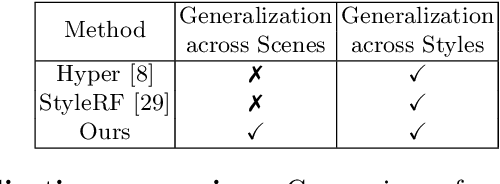
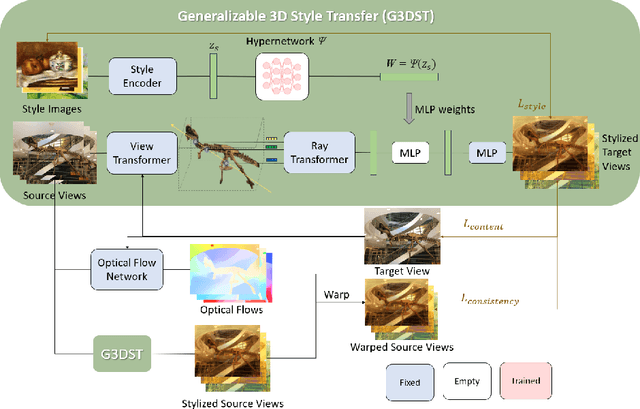

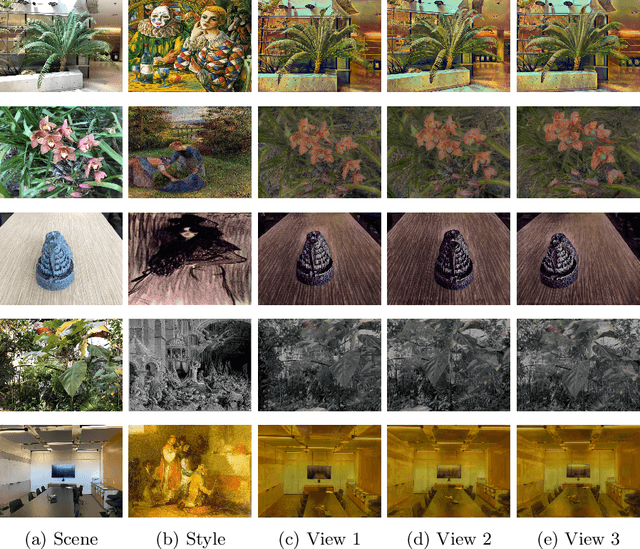
Abstract:Neural Radiance Fields (NeRF) have emerged as a powerful tool for creating highly detailed and photorealistic scenes. Existing methods for NeRF-based 3D style transfer need extensive per-scene optimization for single or multiple styles, limiting the applicability and efficiency of 3D style transfer. In this work, we overcome the limitations of existing methods by rendering stylized novel views from a NeRF without the need for per-scene or per-style optimization. To this end, we take advantage of a generalizable NeRF model to facilitate style transfer in 3D, thereby enabling the use of a single learned model across various scenes. By incorporating a hypernetwork into a generalizable NeRF, our approach enables on-the-fly generation of stylized novel views. Moreover, we introduce a novel flow-based multi-view consistency loss to preserve consistency across multiple views. We evaluate our method across various scenes and artistic styles and show its performance in generating high-quality and multi-view consistent stylized images without the need for a scene-specific implicit model. Our findings demonstrate that this approach not only achieves a good visual quality comparable to that of per-scene methods but also significantly enhances efficiency and applicability, marking a notable advancement in the field of 3D style transfer.
Refining 3D Human Texture Estimation from a Single Image
Mar 06, 2023
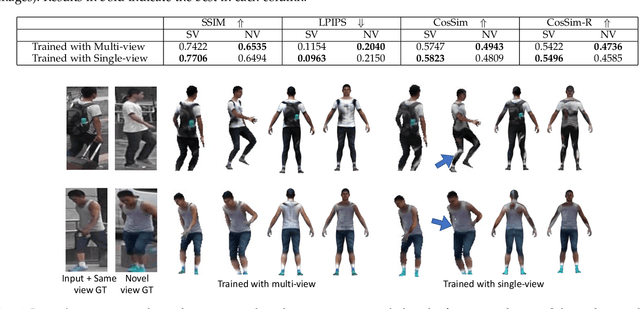
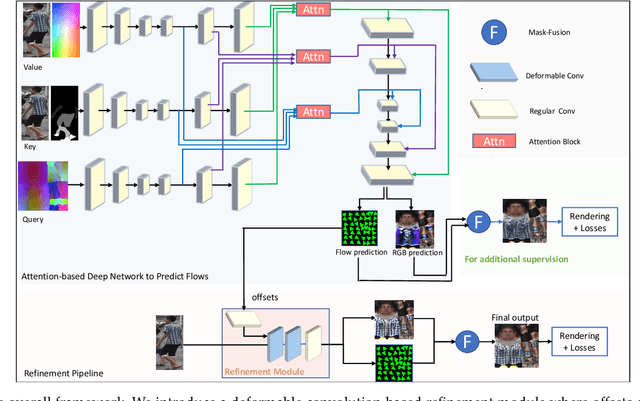
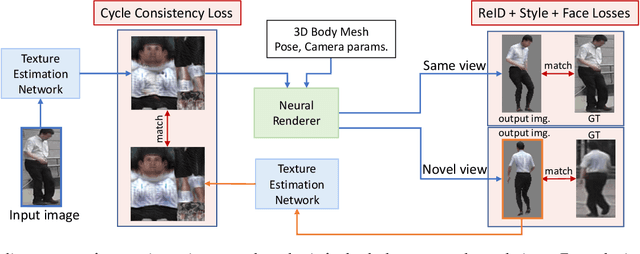
Abstract:Estimating 3D human texture from a single image is essential in graphics and vision. It requires learning a mapping function from input images of humans with diverse poses into the parametric (UV) space and reasonably hallucinating invisible parts. To achieve a high-quality 3D human texture estimation, we propose a framework that adaptively samples the input by a deformable convolution where offsets are learned via a deep neural network. Additionally, we describe a novel cycle consistency loss that improves view generalization. We further propose to train our framework with an uncertainty-based pixel-level image reconstruction loss, which enhances color fidelity. We compare our method against the state-of-the-art approaches and show significant qualitative and quantitative improvements.
 Add to Chrome
Add to Chrome Add to Firefox
Add to Firefox Add to Edge
Add to Edge